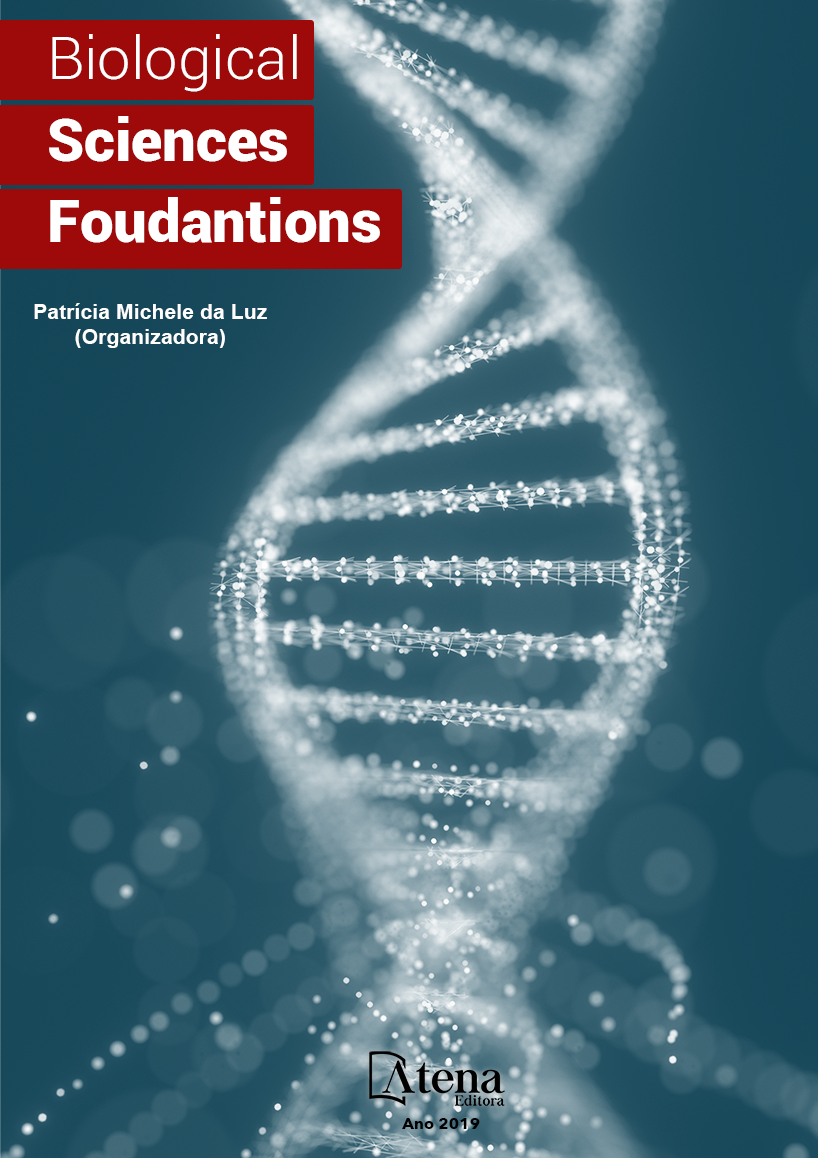
CARACTERIZAÇÃO DO CICLO CELULAR EM CÉLULAS MERISTEMÁTICAS RADICULARES DE Allium cepa L. DO BULBO GRANDE
A cebola é uma das hortaliças mais
importantes do mercado brasileiro e mundial,
por ser apreciada como condimento alimentar.
Os programas de melhoramento visam à
obtenção de variedades de polinização aberta,
através de melhoramento populacional ou
seleção recorrente. A seleção dos genótipos
é realizada inicialmente, em grande parte,
do germoplasma nacional já amplamente
adaptado. Em 2006 foram lançados dois
híbridos (Bella Dura e Bella Vista), os quais
podem ser considerados os primeiros híbridos
criados e desenvolvidos no Brasil. A partir de
todos estes relatos, o estudo citogenético dará
suporte aos programas de melhoramento,
oferecendo informações que podem auxiliar
na seleção de genótipos compatíveis para
a hibridação, garantindo o processo de
recombinação. Partindo dessas considerações,
este estudo teve como objetivo avaliar o
núcleo interfásico e o padrão de condensação
profásico da cebola de bulbo grande, visando
à caracterização. Foram utilizadas células
meristemáticas da raiz tratadas no fixador
Carnoy. Após fixação, as raízes foram lavadas
em água destilada, hidrolizadas com HCl 5N,
posteriormente coradas com carmim acético
a 2,0 % e analizadas ao microscópio óptico.
Foi possível observar as fases características
do ciclo celular da cebola: núcleo interfásico,
prófase, pró-matáfase, matáfase, anáfase,
telófase e citocinese. Na metáfase foi possível
identificar cromossomos metacêntricos e submetacêntricos,
e o número cromossômico (2n =
16) da cebola. A caracterização do ciclo celular
e a definição do nível de ploidia darão suporte
aos programas de melhoramento, oferecendo
informações que podem auxiliar na seleção
de genótipos compatíveis para a hibridação,
garantindo o processo de recombinação de
forma eficiente.
CARACTERIZAÇÃO DO CICLO CELULAR EM CÉLULAS MERISTEMÁTICAS RADICULARES DE Allium cepa L. DO BULBO GRANDE
-
Palavras-chave: Citogenética vegetal, hortaliça, mitose, Allium sp.
-
Keywords: Plant cytogenetics, vegetable, mitosis, Allium sp.
-
Abstract:
The onion is one of the most
important vegetables of the Brazilian and
world market, for being appreciated as a food
flavoring. Breeding programs aim to obtain
open pollinated varieties through population
improvement or recurrent selection. The
selection of the genotypes is carried out initially,
in great part, of the already widely adapted
national germplasm. In 2006, two hybrids were
introduced (Bella Dura and Bella Vista), which
can be considered the first hybrids created and developed in Brazil. From all these
reports, the cytogenetic study will support the breeding programs, offering information
that can help in the selection of compatible genotypes for the hybridization, guaranteeing
the recombination process. Based on these considerations, this study aimed to evaluate
the interphase nucleus and prophase condensation pattern of the large bulb onion,
aiming at the characterization. Root meristematic cells treated in the Carnoy fixative
were used. After fixation, the roots were washed in distilled water, hydrolyzed with HCl
5N, then stained with 2 % acetic carmine and analyzed under an optical microscope.
It was possible to observe the characteristic phases of the onion cell cycle: interphase
nucleus, prophase, prophase, mataphase, anaphase, telophase and cytokinesis. In the
metaphase it was possible to identify metacentric and sub-metacentric chromosomes,
and the chromosome number (2n = 16) of the onion. The cell cycle characterization and
definition of the ploidy level will support the breeding programs, offering information that
can help in the selection of compatible genotypes for the hybridization, guaranteeing
the recombination process efficiently.
-
Número de páginas: 15
- Vitória Réggia Ferreira Lopes
- Adna Cristina Barbosa de Sousa


